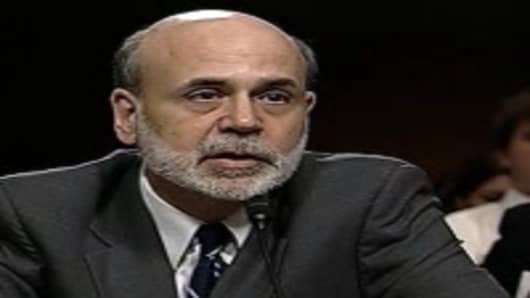Stocks slumped, bond yields rose, and the dollar strengthened, as traders saw no deeper commitment to easing in the Fed’s March meeting minutes.
“It’s just surprising that so many investors had expectations all over again that we would get an announcement that could indicate QE3,” said Zane Brown, fixed income strategist with Lord Abbett.
Market expectations for more Fed easing—both quantitative easing or an extension of its ‘operation twist’—have seesawed back and forth in the past several weeks. In the beginning of March, markets factored out quantitative easing based on comments from Fed Chairman Ben Bernanke that it might not be needed and that the economy was showing improvement.
At the time, yields rose and stocks also held gains. But some weaker economic reports and new comments from Bernanke last week, defending the Fed’s easing stance, while not new, helped renew expectations for more easing.
The Fed minutes from its March 13 meetingshowed that Fed members continued to discuss using more stimulus if the economy deteriorates, which is not a new stance. It also showed that the recent economic data did not materially change the forecast for 2013, or 2014. They also repeated past concerns about housing and unemployment, as well as discussed recent improvements in employment.
Bernanke last week said the improvement in employment may be the result of companies making up for the overly deep cuts they made during the financial crisis, and the gains may not be sustainable.
There was also discussion of the potential for an abrupt sharp fiscal tightening at the beginning of 2013, something economists say concerns some Fed members and could be a reason for more monetary stimulus.
Barclays economists noted that the minutes showed that what was a "number" of FOMC members in December, became only a "couple" of members at the March meeting that said additional accommodation could be necessary. In January, it was a "few" members.
Markets will now become laser focused on Friday’s March employment report which is expected to show a fourth month of 200,000 plus gains in nonfarm payrolls. Economists also believe it will be an important part of what the Fed considers when it heads into its April meeting.
There are expectations that the Fed could extend or announce the end of its “operation twist” program at the April 24, 25 meeting. The ‘twist’ program is set to end in June and involves the purchase of longer dated Treasury securities by the Fed, and the sale of an equal amount of shorter duration securities, a process aimed at lowering long term rates.
Some Fed watchers believe the Fed could also consider another round of outright asset purchases, a third round of quantitative easing or QE3. In this round, the Fed has said it could purchase mortgage securities to drive rates lower and help the housing market. Goldman Sachs economists believe there is a good chance the Fed will do one or the other by its June meeting, but the street is split and others see no further easing, for now.
“The minutes seem negative on the surface [but] I’d be cautious into reading too much into these comments,” said Sal Arnuk, co-manager of trading at Themis Trading. “Then again, you don’t need too much to push the market around on a day like this…we also seem to be consolidating from last quarter’s big move.”
Arnuk also noted that the Fed is unlikely to make dramatic moves in its policy during an election year that could rattle markets.
“It’s tempting to say they may ease less and interest rates drift up, but we only need to smack ourselves in the face and see that this is an election year—we’re not expecting to see much that hits markets,” he said.
After the minutes, stocks moved to lows of the day, with the Dow dipping to a triple digit loss. The Dow recovered some losses to end the day down 64 at 13,199, and the S&P 500 was down 5 at 1413. The 10-year bond yield rose to 2.29 percent, from 2.16 just before the 2 p.m. Fed release.
“We just did a round trip in two days, from (10-year yields of ) 2.15 to 2.25, to 2.16 to 2.26, and there was nothing new in the statement. It’s just absolutely insane. They didn’t lead the market by indicating any additional operation twist,” said one senior Treasury trader.
Follow Patti Domm on Twitter: @pattidomm
Questions? Comments? Email us at marketinsider@cnbc.com




